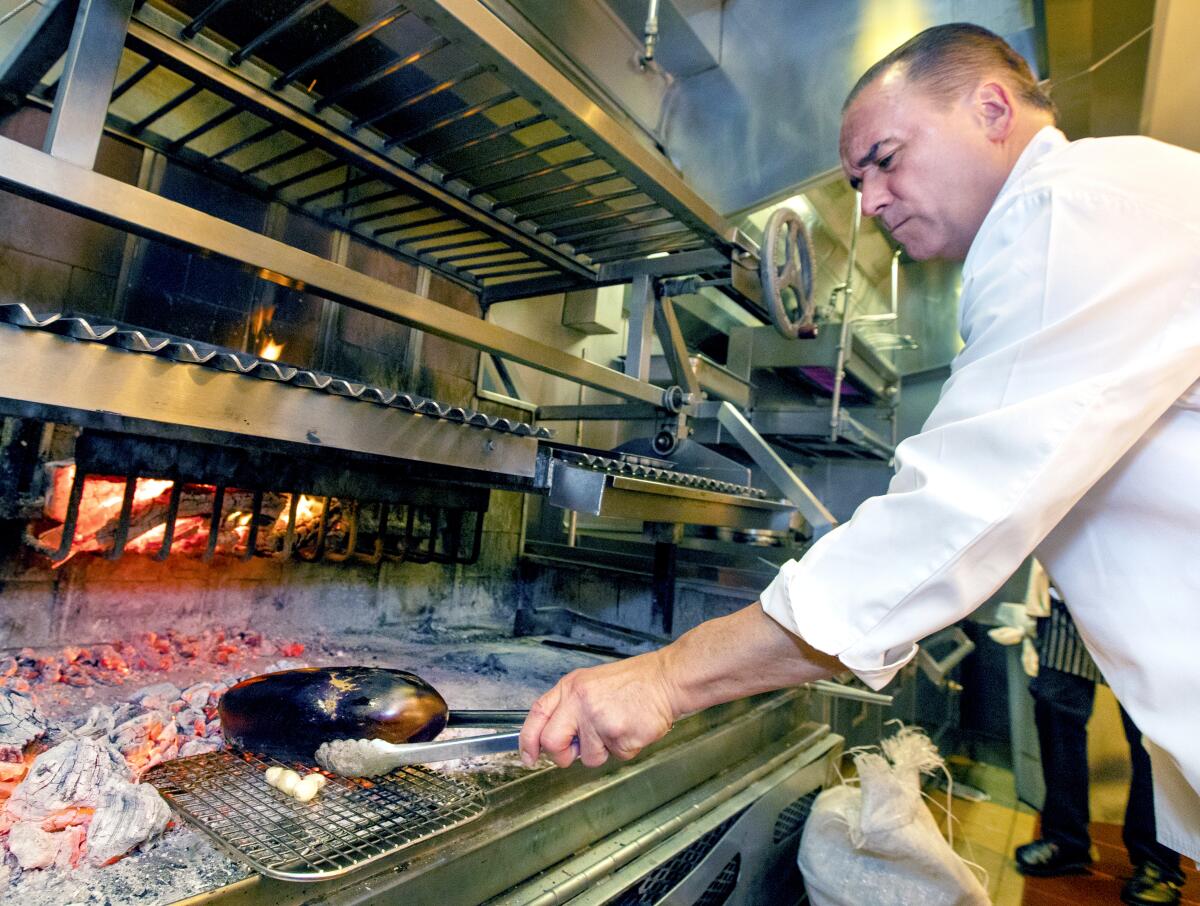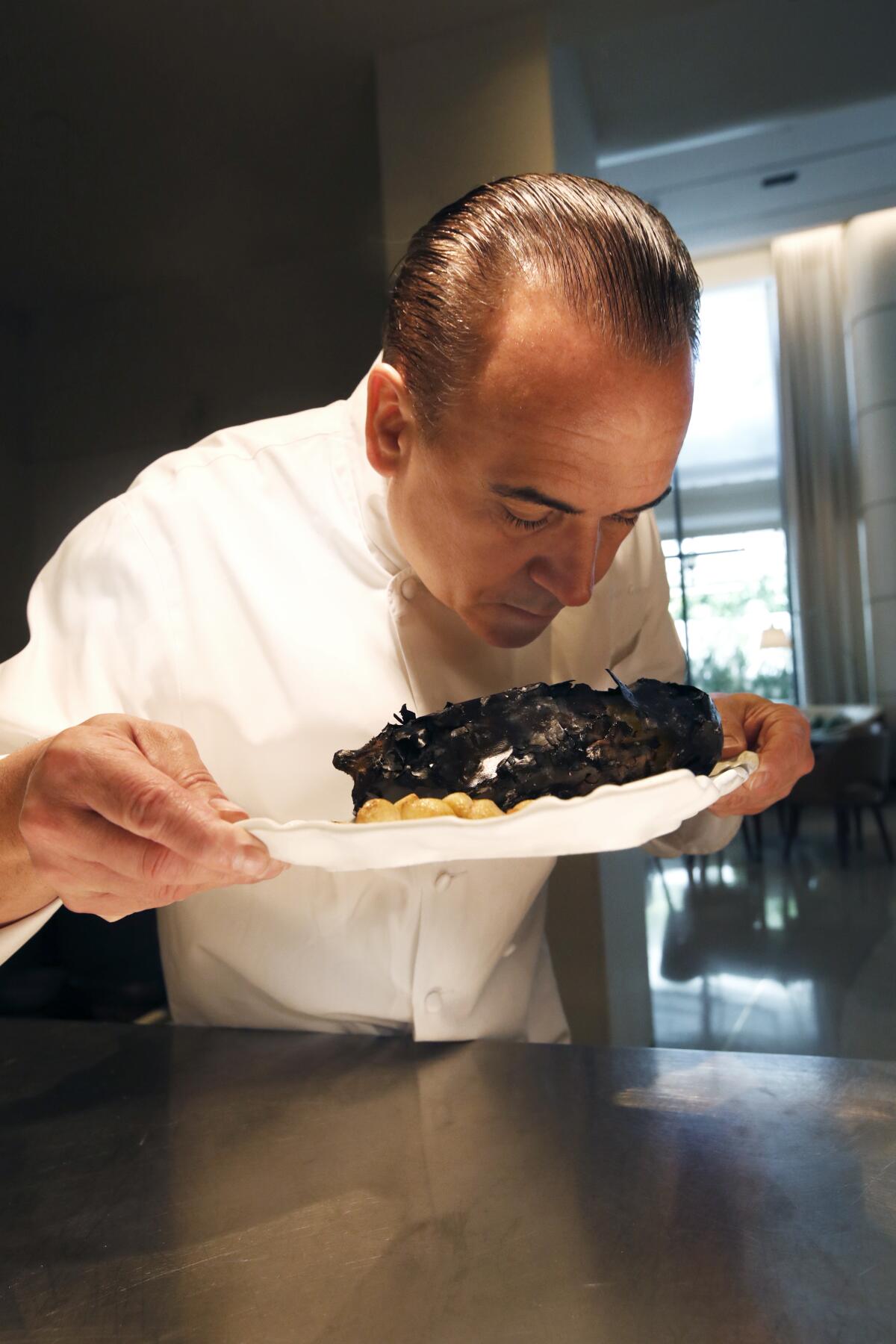Jean-Georges Vongerichten cooks with fire. Here’s how.

- Share via
To max out on smokiness in his smoky eggplant dip, chef Jean-Georges Vongerichten nestles the vegetables in a wood fire. If you have a charcoal grill or outdoor wood-burning oven, you can do the same. (If you don’t, you can grill or broil the eggplant and the dip will still be delicious.)
Use applewood.
“You can smell the fire in what you’re cooking,” says Vongerichten. Applewood imparts a pure smokiness to the eggplant. Burn large hardwood pieces until they glow only with embers. You don’t want fierce flames that will burn the food and impart an acrid bitterness. You’re going for heat and smokiness, so let the logs burn until they ash over and glow.
Put small vegetables on a heat-proof metal rack or foil.
Garlic gets smoked in this recipe too, but you’ll lose the cloves if you just toss them into the wood. Instead, set them on a metal rack or baking sheet that can withstand high heat (sizzle platters, in restaurant talk) or in a double layer of heavy-duty foil.
Let the eggplant sit on the wood and turn, turn, turn.
If you’re experienced in wood-fire cooking, you can nestle the eggplant in the logs. If not, know that they’re hard to wriggle out when they’re done. The novice method works just as well: Just set the vegetable on top of the burning wood and turn to evenly blacken.

Pull the eggplants earlier than you think.
They are done when they start collapsing and their skin is blackened. The insides will keep cooking from residual heat, so don’t wait until the whole thing has shriveled before removing. When you cut it open, it should be snow white inside. If you let it hang out on the embers, it’ll turn spackle-gray.
More to Read
Eat your way across L.A.
Get our weekly Tasting Notes newsletter for reviews, news and more.
You may occasionally receive promotional content from the Los Angeles Times.











